Fort Worth, TX Pollen and Allergy Report for Summer 2023
Pollen Allergy Trends in Fort Worth, TX
When is pollen lowest in Fort Worth, TX?

February
Lowest month total PPM
Avg. PPM
When is pollen highest in Fort Worth, TX?

March
Highest month total PPM
Avg. PPM
How does pollen in Fort Worth, TX compare to Texas?
Fort Worth has a higher average PPM than the state of Texas.
Fort Worth yearly avg PPM:
Texas yearly avg PPM:
How does pollen in Fort Worth, TX compare to the USA?
Fort Worth has a higher average PPM than the USA.
Fort Worth yearly avg PPM:
USA yearly avg PPM:
Is pollen worse this year in Fort Worth, TX?
Spring 2023 was worse than spring 2022.
Spring 2023 PPM:
Spring 2022 PPM:
Average PPM in Fort Worth, TX
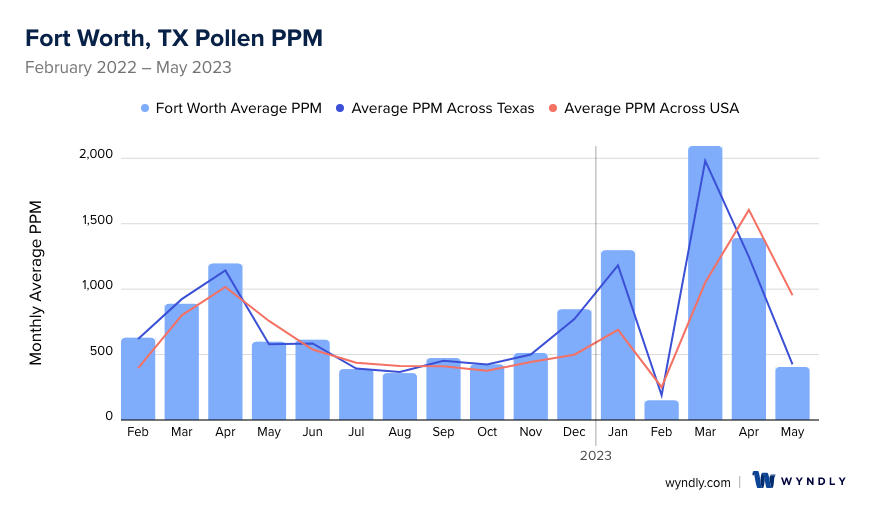
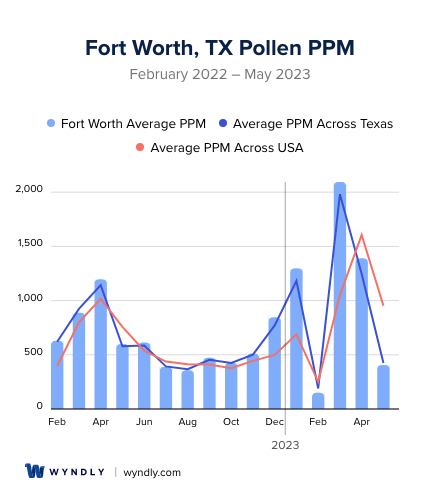
Fort Worth, TX Pollen and Allergy Breakdown by Month
Grass
When is grass pollen highest in Fort Worth, TX?
February has the highest grass pollen in Fort Worth, TX with an average PPM of
When is grass pollen lowest in Fort Worth, TX?
December has the lowest grass pollen in Fort Worth, TX with an average PPM of
Tree
When is tree pollen highest in Fort Worth, TX?
March has the highest tree pollen in Fort Worth, TX with an average PPM of
When is tree pollen lowest in Fort Worth, TX?
July has the lowest tree pollen in Fort Worth, TX with an average PPM of
Weed
When is weed pollen highest in Fort Worth, TX?
December has the highest weed pollen in Fort Worth, TX with an average PPM of
When is weed pollen lowest in Fort Worth, TX?
February has the lowest weed pollen in Fort Worth, TX with an average PPM of
Fort Worth, TX Pollen Monthly Breakdown by Pollen Type
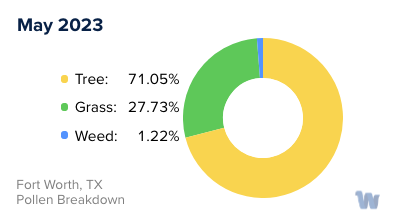
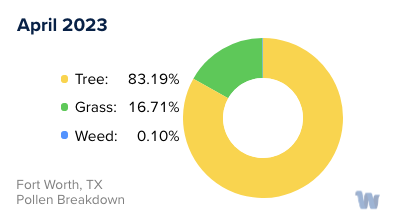
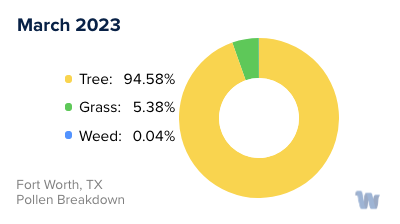
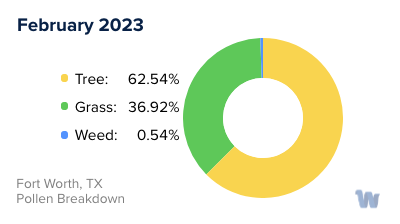
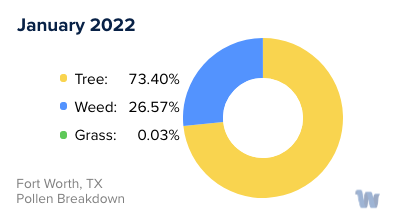
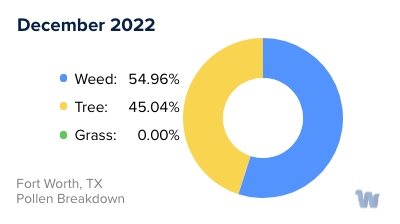
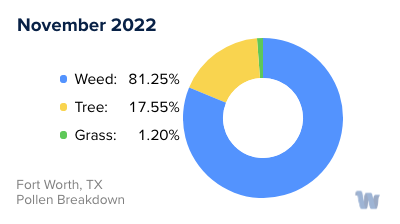
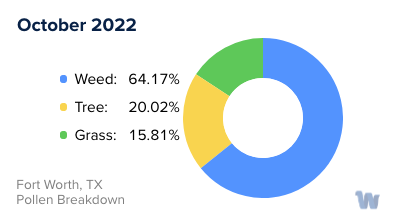
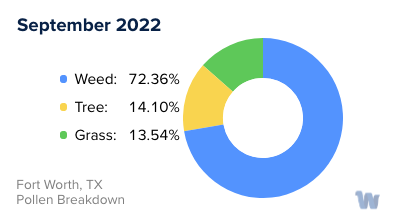
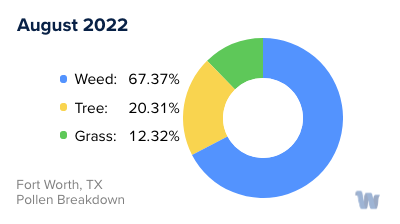
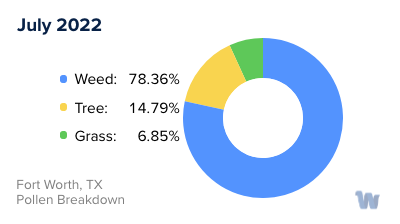
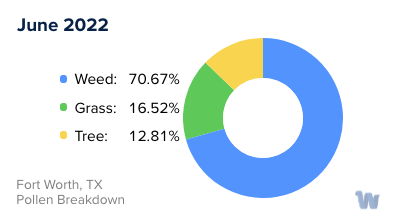
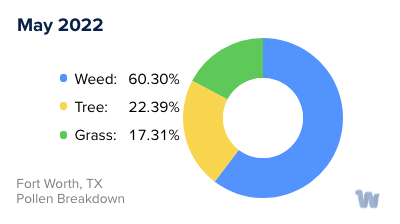
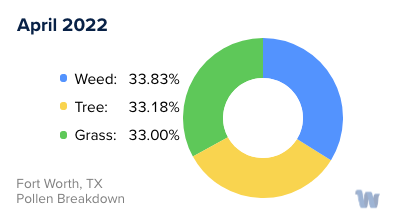
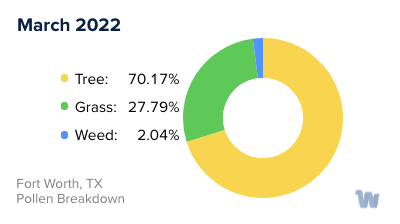
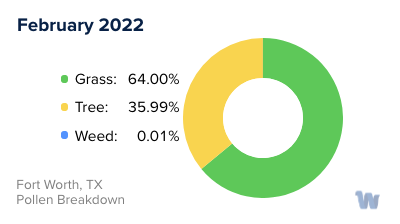
Pollen and Hay Fever in Fort Worth, TX
Pollen allergies, commonly known as hay fever, are a widespread health issue affecting many individuals in Fort Worth, Texas. These allergies occur when our immune systems react to certain particles, known as allergens, found in different types of pollen.
In Fort Worth, three main types of pollen are responsible for the majority of allergic reactions: tree, grass, and weed pollen. Each type has its unique season, usually correlating with the reproductive cycles of local flora, when the air becomes heavily saturated with these allergens.
Tree pollen season typically starts in late winter and extends through spring. A multitude of tree species, including oak, cedar, and pine, are common culprits for causing allergic symptoms. They release vast amounts of pollen into the air during this period, triggering hay fever in sensitive individuals.
As spring transitions into summer, grass pollen takes the lead. Bermuda grass, ryegrass, and Kentucky bluegrass are among the primary sources of grass pollen in the Fort Worth area. This period, lasting from late spring to early summer, can be particularly challenging for those allergic to grass pollen.
Weed pollen, from plants such as ragweed, sagebrush, and pigweed, tends to peak in the late summer and fall. Interestingly, one ragweed plant alone can produce up to one billion pollen grains in a single season, making it a potent allergen source.
The fluctuating temperatures and wind patterns characteristic of Fort Worth can influence the dispersal and concentration of pollen, potentially intensifying allergy symptoms during these peak periods.
Pollen allergies can have a significant impact on residents' daily lives, causing discomfort and affecting their overall quality of life. Awareness of the types of pollen and their respective seasons can help Fort Worth residents anticipate and better understand their allergies, although the discussion of specific remedies or treatments is beyond the scope of this article. Being prepared, however, can empower individuals to manage their symptoms proactively and live healthier lives.

